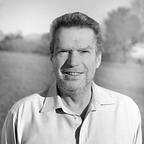Draw out the creative best in others
Gillian Barbara Lynne (CBE) was born on 20 thFebruary 1926 in Bromley, Kent, England and was recognised as a dance talent at a young age. Teaming up with her childhood friend, Beryl Grey, while still at school, she danced to blot out the tragedy of the violent death of her mother in a car crash when she was but 13 years old.
Gillian’s gift for dancing was discovered by a doctor when she was 8 years old — she had been underperforming at school, interrupting some of the other children and never completing her homework. The schoolteacher wrote to her mother fearing a learning disorder. Her mother took Gillian to a specialist — Gillian had to sit on her hands for twenty minutes to prevent her from fidgeting while her mother told the specialist about her condition. When complete, the doctor went over to Gillian and asked her to wait while he went to go and speak to her mother privately. As he left the room, he turned on the radio. As the doctor and mother watched from the adjacent room, Gillian immediately got to her feet and started moving to the music. The doctor turned to Gillian’s mother and said: “Gillian’s not sick — she’s a dancer. Take her to dance school”. Gillian moved schools and immediately responded differently to the new environment, saying: “I arrived in a room full of people like me”. Today, maybe many a doctor might prescribe medication and tell the patient to calm down, but fortunately not so in Gillian’s case — she went on to dance for the Royal Academy of Dance, became a ballerina, an actress, producer, choreographer, started her own production company and most notably, partnered with Andrew Lloyd Webber, taking responsibility for the choreography for CATS and Phantom of the Opera, the longest running shows in Broadway history. Gillian’s creativity and dancing ability was recognised providentially, and the world benefitted as a result.
Business seems to have an innate inability to recognise and utilise creativity appropriately. In fact, creativity is often squandered through toxic environments that seem to disallow the offering and implementation of new ideas and stigmatise mistakes — staff subsequently fear being wrong. As business moves forward into an unpredictable future (the future is simply not known), it more than ever needs employees to exercise creative minds and apply talents effectively for the business to be flexible, innovative and sustainable in ever-changing economically unstable contexts.
In light of the above, companies need to consider the following:
- Celebrate new ideas and evidence of creativity being applied appropriately — recognition of creativity in individuals and teams is essential to encourage further development.
- Create an environment where “being wrong” is okay — this needs to be coupled with debriefing what can be learned from mistakes made.
- Imbed “innovation” as a core company value — values drive behaviour. Innovative behaviour should be applauded.
- Communicate innovation widely — special attention needs to be given to reinforcing desired creative behaviours and publishing the same to all.
- Reward successes fittingly — successfully implemented improvements and cost-saving techniques should be rewarded creatively and in relation to the extent of the same for the company.
There seem to be extraordinary evidences of human creativity, but unfortunately not often recognised or utilised within the business environment. The human being willingly applies ample energy and discretionary effort when stimulated creatively — business then seems to have a responsibility to draw out the creative best of every employee.
Originally published at https://www.stretchforgrowth.com on September 8, 2024.
